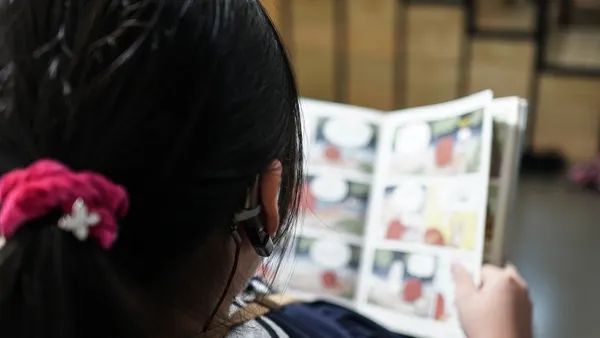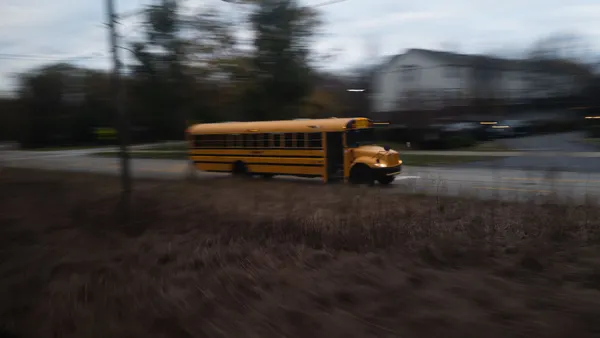Nestled about midway between Atlanta, Georgia, and Chattanooga, Tennessee, Calhoun City Schools serves a population of just over 4,000 students — around 35% of whom are Hispanic. The district has a large English learner population, an issue Chief Academic Officer Kelli Kendrick has worked to address through a number of initiatives.
Kendrick first came to the district over a decade ago as a 1st-grade teacher, advancing into a role as gifted resource teacher before becoming an academic coach and, later, a director of school improvement before landing the system's top curriculum role. Simply put, she's no stranger to the learning needs of the district's students.
Education Dive recently caught up with Kendrick to learn more about how the district is addressing its pre-K, early literacy and ELL needs in particular through initiative that include a mobile learning lab and Language Academy program.
EDUCATION DIVE: Tell me about the Jacket Junction Mobile Learning Lab and how that supports the district's early childhood and literacy efforts.
KELLI KENDRICK: We have a high number of English learners and we also have a large population of economically disadvantaged students. We have a pre-K program, but that program was not reaching all of our students. We also have an education pathway at our high school.
In an effort to reach more students, we took an old school bus and basically gutted the inside — took everything out except for the first six seats — and turned that into a learning facility that we can take to a neighborhood very close to the high school and do a daycare. We also work with a daycare that has quite a few students.
In our education pathway, [students are] preparing to be teachers. Some of them are also in dual-enrollment classes and creating the lessons and working with the [mobile lab pre-K] students. So we've used our pathway to give them a different experience than just the school setting, working with kids that are 6 months to 4 years that come and visit the mobile learning lab.
How did you all go about raising awareness of that within the community? Did it take a lot of effort to get community involvement and buy-in?
KENDRICK: We are very blessed to have a very supportive community. So once we started with this idea, Dr. [Michele] Taylor, our superintendent, helped get this off the ground. Once she put that out there and spoke at several events and talked about it, we had people contacting us very interested in being a part of that.
We have partnered with the local housing authority and LEJO, which is another program that's very close to the school that helps our ELL students. They've been very, very helpful.
Did raising awareness with parents go pretty smoothly, as well?
KENDRICK: Yes. We also have a component as part of the Jacket Junction Mobile Learning Lab where we have resources for parents and talk to them about the developmental steps and the milestones their children should be reaching at certain ages. So we've also tried to do a parent component and talked about the importance of reading and talking to their child and promoting literacy within the home, as well.
Serving English language learners is a challenge for a lot of districts. What kind of success are you all seeing with your Language Academy? And what sort of thought processes went into designing the model for that?
KENDRICK: We used the SIOP model — I don't know if you're familiar with that, but it really does a lot of the background knowledge and uses pictures. When we use our Language Academy, we also have a support person in there that's bilingual, making that connection from English to Spanish for a lot of our students, it was a game changer.
Once way we were able to do that and see the benefits of that, we were able to incorporate that from 1st grade into 2nd grade. We also have found that those students who were successful in that environment, when they went back to their home or a class with students who speak only English, they were very confident.
So we felt like it was a win-win as far as giving them that opportunity to have English and Spanish together, learning in that manner as well as using the SIOP model, which we are training all of our teachers on. But just to get that off the ground, that was a great story for us.













